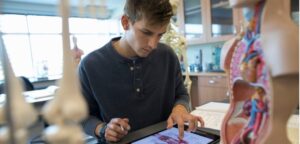
Ace Your Semester: Harnessing AI for a Head Start
The upcoming semester is looming like a deadline in the distance, slowly but surely creeping closer. But fear not! This year, you have a secret weapon in your back-to-school arsenal: AI. Imagine having a digital assistant that never sleeps, helping you draft syllabi, create lesson plans, and even answer those tricky student emails.













